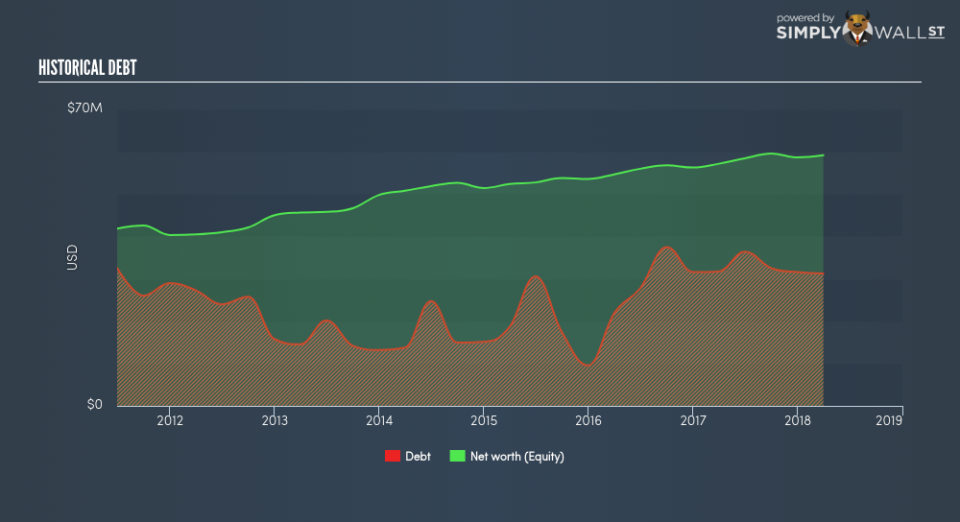Why Union Bankshares Inc (NASDAQ:UNB) May Not Be As Risky Than You Think

The banking sector has been experiencing growth as a result of improving credit quality from post-GFC recovery. Economic growth impacts the stability of salaries and interest rate level which in turn affects borrowers’ demand for, and ability to repay, their loans. As a small-cap bank with a market capitalisation of US$236.68m, Union Bankshares Inc’s (NASDAQ:UNB) profit and value are directly affected by economic activity. Risk associate with repayment is measured by the level of bad debt which is an expense written off Union Bankshares’s bottom line. Today we will analyse Union Bankshares’s level of bad debt and liabilities in order to understand the risk involved with investing in the bank. View out our latest analysis for Union Bankshares
Does Union Bankshares Understand Its Own Risks?
Union Bankshares’s ability to forecast and provision for its bad loans indicates it has a good understanding of the level of risk it is taking on. If the bank provision covers more than 100% of what it actually writes off, then it is considered sensible and relatively accurate in its provisioning of bad debt. Given its large bad loan to bad debt ratio of 319.07%, Union Bankshares excessively over-provisioned by 219.07% above the appropriate minimum, indicating the bank may perhaps be too cautious with their expectation of bad debt.
How Much Risk Is Too Much?
Union Bankshares is considered to be in a good financial shape if it does not engage in overly risky lending practices. So what constitutes as overly risky? Total loans should generally be made up of less than 3% of loans that are considered unrecoverable, also known as bad debt. Bad debt is written off as expenses when loans are not repaid which directly impacts Union Bankshares’s bottom line. Since bad loans only make up a very insignificant 0.29% of its total assets, the bank exhibits very strict bad loan management and is exposed to a relatively insignificant level of risk in terms of default.
How Big Is Union Bankshares’s Safety Net?

Union Bankshares makes money by lending out its various forms of borrowings. Deposits from customers tend to bear the lowest risk given the relatively stable amount available and interest rate. As a rule, a bank is considered less risky if it holds a higher level of deposits. Union Bankshares’s total deposit level of 94.01% of its total liabilities is very high and is well-above the sensible level of 50% for financial institutions. This may mean the bank is too cautious with its level of its safer form of borrowing and has plenty of headroom to take on risker forms of liability.
Next Steps:
The recent acquisition is expected to bring more opportunities for UNB, which in turn should lead to stronger growth. I would stay up-to-date on how this decision will affect the future of the business in terms of earnings growth and financial health. I’ve bookmarked UNB’s company page on Simply Wall St to stay informed with changes in outlook and valuation. This is also the source of data for this article. The three main sections I’d recommend you check out are:
Future Outlook: What are well-informed industry analysts predicting for UNB’s future growth? Take a look at our free research report of analyst consensus for UNB’s outlook.
Historical Performance: What has UNB’s returns been like over the past? Go into more detail in the past track record analysis and take a look at the free visual representations of our analysis for more clarity.
Other High-Performing Stocks: Are there other stocks that provide better prospects with proven track records? Explore our free list of these great stocks here.
To help readers see pass the short term volatility of the financial market, we aim to bring you a long-term focused research analysis purely driven by fundamental data. Note that our analysis does not factor in the latest price sensitive company announcements.
The author is an independent contributor and at the time of publication had no position in the stocks mentioned.

